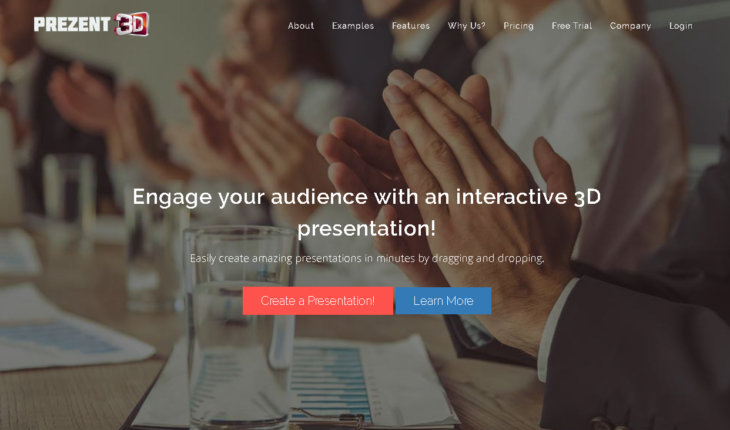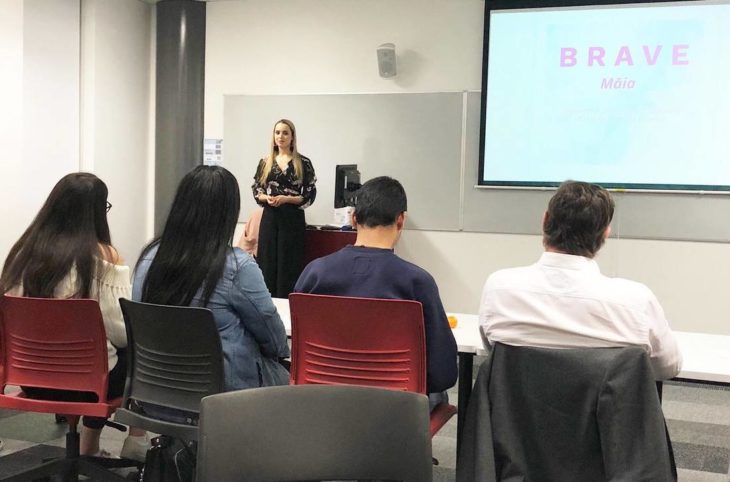Every entrepreneur needs to present its business product or services to partners or customers in a favorable and most revealing light. Presentations are the most common and simple way to reveal all the necessary information. But how to make it right so that it plays its positive role?!
Many business presentations are notoriously known for being dull and uninteresting. Maybe it’s the pages and pages of tables, diagrams, graphs, and numbers. Or perhaps it’s the speaker, who doesn’t make eye contact, speaks only to the whiteboard, or drones on for hours about how great his company is.
Fortunately, it doesn’t have to come to this. Here are several ideas from consulting firm Law & Trust you can make your presentations more powerful and engaging.
Contents
- Develop your story
- Don’t read your presentation
- Establish your credibility from the outset
- Gain attention by saying something surprising
- Pay attention to your movement
- Include supporting information
- Consider how to use the technology
- Ask rhetorical questions
- Use quotes or images to introduce subtopics
- Be ready for questions
Develop your story

Source: The Balance Small Business
A business presentation would only work if you have something worth sharing. To do this, you need to develop what you’re going to say. One particularly effective approach is by telling a story or arranging your presentation like one; people love listening to stories. By weaving a narrative in your business presentation, you can drive home a point, help your audience recall what you’re saying, or persuade the audience to view something differently, among other things.
There are many ways to go about this. For instance, you can start by describing the current circumstances, which your audience already understands; then, you introduce your idea of what could be, and then make a call to action on how to achieve it. Rather than bragging about your company, you can present a problem, than detail the quest for a solution.
Whatever approach you choose for your story, make sure you limit its scope into something that can be easily explained in the time you’re given.
Don’t read your presentation

Whatever you do, do not read your talk as this can alienate your audience. Once the audience realises that you’re reading your presentation, you’ll lose your rapport with them. Everything from that point will feel more formal and awkward. For best results, commit your entire presentation to memory. Take note, however, that this approach takes a lot of work. Aside from remembering each word in their proper order, you also need to keep practicing so that you can deliver your presentation with meaning as if you’re conversing with your audience.
If you don’t have the time to do this, break down your talk into several subtopics, place their corresponding keywords in individual slides or notecards, and then expound on each. What’s important here is that you remember what to say for each keyword and the transitions in between them.
Establish your credibility from the outset

Source: Entrepreneur
Would you believe someone delivering a training program or business presentation who has no experience on the subject? Of course not. For your audience to take you seriously, you’ll need to establish your credibility at the beginning of your presentation. But how do you do this? You can’t just recite a litany of your accomplishments; this would only make you look conceited and ruin any chance of connecting with your audience.
Instead, you can try to be more subtle by doing things like:
- Telling a brief story about your background (provided that it’s related to your presentation’s topic).
- Providing related examples of how you’ve helped others.
- Presenting references that support your presentation’s data.
There’s no need to get too detailed; simply choose specific information that’s applicable to your audience.
Gain attention by saying something surprising

Source: Forbes
AIDA is a marketing approach that stands for: Attention, Interest, Desire, and Action. What makes it particularly effective is the first step, which is Attention. Obviously, you still need to gain the audience’s interest, make them want what you’re offering, and then call them to action, but the succeeding steps won’t be as helpful if you don’t get their undivided attention.
You can make a strong first impression by saying something remarkable or unexpected, which you then support your information to develop interest. If you have one surprising fact in your presentation, use it as a starting point. This doesn’t have to be your central idea; you can simply work your way from there.
Pay attention to your movement

Source: The Business Journals
One of the factors that determine the success of your presentation is how you command the attention of your audience with your actions on stage. You see, presentations aren’t just about the words that come out of your mouth; they’re also about how you move and behave. Moving too much (e.g. constantly shifting weight to either leg, swaying side to side) will distract your audience and make them focus on your fidgeting rather than your talk. At the very least, try to keep still while presenting.
You initially might not be aware of your own unconscious actions so it would be advisable to practice in front of several people you know, who you can ask if you have any distracting habits while presenting. Once you’re aware of any specific behaviors, make a conscious effort to eliminate, if not minimise them.
Include supporting information

Source: Business News Daily
Merely presenting your material isn’t enough, even after you’ve established your credibility at the beginning of the talk. See to it that you always include information to back your hypotheses, and don’t be reluctant in doing so. For example, if you wish to support your claims with a pie chart or graph, you can include it in your slides.
Just remember not to read aloud the information in the exact same words when presenting it in your talk; this is similar to the reading approach mentioned earlier, which can alienate your audience (see “Don’t read your presentation” above).
Consider how to use the technology

Source: Forbes
Using available technology like presentation software, background music, or high-definition videos isn’t required, but they can:
- Add punch to your performance.
- Make your talk more memorable.
- Keep your audience engaged.
- Organise the flow of your talk.
- Reinforce the point you’re trying to make.
- Introduce variety in your presentation.
- Simplify concepts through visual aid.
- Facilitate learning.
Bear in mind, however, that you don’t have to use these tools to deliver a great talk. In fact, they can work against you if not used properly. Presentation programs, for instance, can cause you to stop engaging your audience and instead focus on your slides. Your reliance on video, especially those longer than one minute, can make your audience tune you out. The soundtrack could drown out your voice.
The point: these tools can enhance or hurt your presentation so plan carefully how you’re going to use them. But you should definitely check Visme presentation software which has have a great variety of premade templates.
Ask rhetorical questions

Source: Slido Blog
A rhetorical question is a figure of speech, made in the form of a question but isn’t supposed to be answered. It’s a great device for adding panache and colour to your presentations, so think about using them.
Rhetorical questions serve many purposes, including (but are not limited to) the following: to assert or deny something; urge the listener to reflect on the matter at hand; persuade other people; encourage the audience to be more active in your presentation; spur the emotions (e.g. “Is there no honest politician left?“); highlight a previous statement; and so on.
Use quotes or images to introduce subtopics

Source: Focusky
Rather than putting titles on your slides in between subtopics, consider inserting hard-hitting quotes or images. This can add impact to your transitions, and help make your presentation more stimulating and memorable. Even if they’re colourful, business presentations are usually chockfull of pie charts, graphs, and bullet points so your audience could benefit from something more visually interesting.
Of course, make sure that your quotations and/or images are relevant to your presentation. For example, if your subtopic is about business failures and how we can learn from them, you can introduce this quote by basketball great Michael Jordan:
“I’ve missed more than 9,000 shots in my career. I’ve lost almost 300 games. Twenty-six times, I’ve been trusted to take the game winning shot and missed. I’ve failed over and over and over again in my life. And that is why I succeed.”
Be ready for questions

Source: BRAVE
You should also be ready for questions about your presentation, especially if there’s going to be a question-and-answer portion at the end. Try to anticipate all the possible objections, concerns, and other issues about your talk, and then prepare an answer for all of them–particularly the most problematic ones. Your familiarity with your presentation should help you predict what your audience may ask.
Even if there is no Q&A section, or if no one actually asks you something, you can still use the questions you prepared and answer every last one of them (if the time permits, of course). This will help to make your presentation more comprehensive overall.
Using these 10 ideas you will make your presentation powerful and more successful. Good luck!
